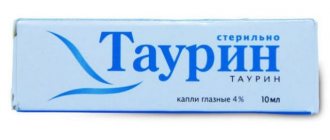Fatty acids are necessary for proper functioning of the body and good health. They are responsible for regulating natural processes, improving metabolism, the beauty of hair, skin, replenishing energy and more.
Conventionally, all fatty acids are divided into saturated and unsaturated. The latter include monounsaturated and polyunsaturated fats of the Omega 3, 6 and 9 groups, which are replenished through food intake or special sports supplements. And in order to fully understand how important these acids are, we suggest you study this article. So, let's go.
What are Omega 3, 6 and 9?
Fatty acids are an important material for the synthesis of biologically active substances, phospholipids, and glycolipids. Without them, we simply cannot exist and lead an active lifestyle. However, their effect on the body is different. And now we will find out.
- Omega 3. This group includes alpha-linolenic, docosahexaenoic and eicosapentaenoic acids. They prevent premature aging of cells, normalize the functioning of the brain and heart, accelerate the process of eliminating toxins and have an anti-inflammatory effect.
- Omega 6. The group includes linoleic, docosapentaenoic and arachidonic acids, which have a beneficial effect on the health of nails, improve hair structure, prevent the development of diabetes, arthrosis, reduce blood viscosity, etc.
- Omega 9. The main representative of this group is oleic acid, which reduces blood clots and cholesterol levels in the blood, strengthens the immune system and improves visual acuity, activates the production of hormones and serves as an excellent cancer prevention.
These acids cannot be independently synthesized by the body, which means that each of them must enter the body from the outside.
Beneficial features
As you already know, not all fats are created equal. There are saturated fats (harmful to the body) and unsaturated fats, including Omega-9. In contrast to their harmful “relatives,” these acids help reduce the level of bad cholesterol and promote normal blood circulation in the body.
No, they do not break down bad cholesterol, but prevent the formation of cholesterol deposits, preventing thrombosis. The study of this fact began in the Mediterranean countries, where the statistics of cardiovascular diseases differ significantly from the rest of the world. People who eat foods rich in Omega-9 practically do not suffer from problems with the heart and blood vessels.
Natural springs
Various foods serve as natural sources of fatty acids:
- Omega 3 is fish and fish oil, greens and oat germ, red and black caviar, vegetable oils and poultry eggs, nuts and seafood.
- Omega 6 is sunflower and pumpkin seeds, butter, soybean, peanut, corn, flaxseed oil, eggs and pine nuts, poppy seeds and lard.
- Omega 9 is unrefined oils (canola, olive, flaxseed) and beef fat, nuts and pumpkin seeds, poultry and pork, sesame, etc.
Buy Omega-9
We recommend paying attention to the premium vitamin manufacturer Solgar; this company has earned excellent reviews and is one of the leaders in the American market. You can find fish oil from Solgar in most pharmacies, but ordering it from the USA can save you money.
An excellent alternative would be the mass market, which offers quality products at an affordable price, as well as Madre Labs with the most affordable price on the market.
For pregnant and nursing mothers, Carlson Labs produces specialized fish oil rich in essential nutrients.
can study reviews and also buy a complex with Omega-9 in the iHerb store.
- This paragraph contains a promotional link. You will receive a discount from us when placing your first order, and the store will pay us a small percentage of the profit from your purchase. This allows you to save money and allows us to maintain the operation of the site and editorial staff. Thank you!
Daily norm
A lack of fatty acids leads to disruption of the functioning of internal organs and systems. The daily diet of an adult should contain from 700 mg to 1500-3000 mg Omega-3 acid for men and from 700 to 900-1500 mg for women.
Accordingly, the consumption of Omega-6 acids should be 700-800 mg daily for women and men, and Omega-9 acids 700-800 mg for men and 200-600 mg for women.
And further! To restore the body after illness and training, the daily intake of polyunsaturated fatty acids may exceed the dosage, but not more than 2 times.
Cochrane
Review Question
We reviewed randomized trials (participants were given equal chance to receive either intervention) that examined the effects of increased omega-6 fat intake on mortality and cardiovascular disease (CVD), including heart attacks and strokes.
Relevance
Omega-6 fats are necessary for the body; we get them from food. They are important for energy production (metabolism), bone health, skin and hair. Many foods, especially vegetable oils and nuts, contain omega-6 fats. Omega-6 fats include linoleic acid (LA), gamma-linolenic acid (GLA), dihomo-gamma-linolenic acid (DGLA) and arachidonic acid (AA).
Some evidence suggests that increased intake of omega-6 fats with reduced intake of saturated fat (from animal sources, in meat and cheese) may reduce the incidence of coronary heart disease. In contrast, there are concerns that high levels of omega-6 fats may worsen cardiovascular risk by increasing inflammation. Overall, there is no convincing evidence of the benefits or harms of omega-6 fats for cardiovascular disease or other conditions.
Characteristics of studies
The evidence in this review is current to May 2020. We found 19 studies involving 6461 adults. These studies assessed the effect of high intake of omega-6 fats on cardiovascular disease and mortality. We found that three of the trials were highly credible (well designed and therefore reliable evidence). The studies were conducted in North America, Asia, Europe and Australia. Eight of them were funded only by national or philanthropic agencies. Participants consumed more omega-6 fats or maintained normal levels from 1 year to 8 years.
Main results
We found that increased intake of omega-6 fats may have little or no effect on mortality or cardiovascular events and may reduce the risk of heart attacks (low-quality evidence). The evidence was weakened by problems with study design, small numbers of events, and low numbers of participants from developing countries and women.
Evidence suggests that increased intake of omega-6 fats reduces blood cholesterol (high-quality evidence), has little or no effect on weight for height (moderate-quality evidence), and has little or no effect on triglycerides, high-density lipoproteins (HDL, “good” cholesterol) and low-density lipoprotein (LDL, “bad” cholesterol, low-quality evidence).
Benefits and effects on the body
Regular intake of Omega-3, 6 and 9 acids helps improve the health of the entire body and prevents the development of various diseases. Eating foods rich in fats can increase your energy levels and improve your well-being and mood. But this is not always enough.
You can replenish the supply of healthy fats in your body by ordering sports supplements Omega 3-6-9, Red Omega, Fish Oil and others on our website. They are produced by well-known manufacturers QNT, NATROL, SAN, NOW, MAXLER, ULTIMATE and help normalize the functioning of vital systems, reduce body weight, and achieve high results in sports.
The range of products is constantly updated. Contact us and you will easily find the complex of fatty acids that you need!
Types of Omega 6 Fatty Acids
This is a family of polyunsaturated fatty acids (anti-inflammatory and pro-inflammatory). There are many types of PUFAs. One of the most useful types is linoleic acid. It is a carboxylic acid with a long chain of 18 carbon atoms.
Linoleic acid should be taken regularly. Thanks to its properties, adequate metabolism is maintained. The body uses linoleic acid to synthesize biochemicals.
Important! Linoleic acid is known for its beneficial properties, which allow it to be used in the production of cosmetics.
Daily requirement
The need for Omega-6 varies from person to person. According to nutritionists, the daily requirement can vary from 4.5 g to 8 g. And this is quite fair, because we are all so different.
Moreover, this need may increase in the following circumstances:
- in the cold season, when the body has to expend more energy on heating;
- for chronic and acute diseases (disturbances in the gastrointestinal tract);
- when the body does not have enough vitamin A or another fat-soluble element;
- during pregnancy.
A decrease in the need for Omega-6 occurs during the warm season. In addition, people suffering from low blood pressure need less fatty acids.
At the same time, an excess or deficiency of EFAs can cause serious harm to the body.
The daily requirement for Omega-6 is individual and varies from 4.3 to 10 g. This is the difficulty, because it is important not to exaggerate or understate the consumption of the substance. Your doctor will help you calculate the norm.
Under some circumstances, the daily requirement increases. It is worth leaning on foods with fatty acids in the cold season, with chronic and acute diseases, disorders of the gastrointestinal tract, with vitamin A deficiency, and during pregnancy.
Doctors advise people suffering from low blood pressure and other problems with the cardiovascular system to consume less foods containing Omega-6. During the warmer months, you can also reduce your intake of fatty acids.
Application of Omega 6 in cosmetology
Omega 6 has beneficial properties that are successfully used in cosmetology. EFA (vitamin F) is commonly included in cosmetics as a main ingredient.
The benefits of Omega 6 for women are due to its properties:
- rejuvenating;
- moisturizing;
- anti-inflammatory;
- strengthening.
A useful component is added to balms and ointments intended for the treatment of skin diseases. The supplement is beneficial for dry, aging, problematic skin. Cosmetics also get rid of dark circles under the eyes.
Attention! Creams, shampoos, balms, serums, masks, lotions and oils are stored in the refrigerator. Otherwise, a useful product may cause harm.
Causes and symptoms of Omega 6 deficiency in the body
Since PUFAs are not synthesized by the body, their deficiency is caused solely by insufficient consumption. Long-term Omega 6 deficiency leads to the following diseases:
- cardiovascular diseases;
- arthritis;
- bronchial asthma;
- cancer;
- depression.
Omega 6 deficiency is manifested by the following symptoms:
- decreased performance;
- anxiety;
- hair loss;
- growth retardation in children;
- dry skin;
- arrhythmia.
A lack of Omega 6 harms the entire body. The beneficial properties of PUFAs are necessary for the functioning of every cell.
Why are EFAs called "omega"?
It is convenient for chemists to count which carbon atom of the chain, starting from the methyl end opposite to where the acid (carboxyl) group is located (i.e., from the omega end), has the first double bond. The chemical properties of the substance and its role in metabolism largely depend on this. Those NFAs in which the first double bond is located between the 6th and 7th carbon atoms are called omega-6. Those with between 3 and 4 atoms are omega-3. And so on. There are omega-2, omega-5, omega-12 fatty acids. But we are only interested in omega-3, omega-6 and omega-9 because they are the most commonly found in foods and have the greatest impact on human health. And the most valuable of them, undoubtedly, is omega-3.
Where are Omega 6 fatty acids found?
Polyunsaturated fatty acids are present in foods of both plant and animal origin. The use of PUFAs should be rational. Excess of the component can harm the body.
Animal sources
Animal sources include:
- fat (turkey, chicken, duck, beef, lamb, goat);
- chicken liver;
- veal;
- lean pork;
- lamb;
- chicken eggs.
Poultry is considered the main source of health benefits.
Plant sources
Plant sources include:
- cereals and nuts;
- whole wheat bread;
- durum wheat;
- walnuts, pine nuts, pecans, cashews;
- borage and evening primrose oil;
- flaxseed, rapeseed, hemp, soybean, palm, sunflower, corn oils;
- pumpkin seeds.
We recommend reading: Pecans: beneficial properties, contraindications, calorie content and reviews
The basis is sunflower, soybean, palm and rapeseed oils. Omega 6 rich grape seed oil.
Who cares
As practice shows, in the diet of most modern people there is a predominance of Omega-6 and 9, while Omega-3 is practically absent. The ratio between the two essential acids in the diet of Russian residents is 1:25, then the norm is 1:3, this is ideal.
With the participation of archaeologists, it was found that in those times when human nutrition consisted exclusively of greens, meat, and fish, there was no shortage of Omega-3. In addition, the balance between the two essential acids was strictly maintained.
The picture began to change as people mastered agriculture and cattle breeding. Now, when technologies for growing plants and animals have been maximally improved, the concentration of Omega-6 exceeds the recommended norm by 5 times or even more.
Omega-3 acids are found in large quantities in dark green vegetables and seaweed. The same substance saturates the meat and milk of animals, as well as fish that feed on these products. Omega-6 predominates in grain and feed, which is most often used to fatten cows, chickens and other farm animals. As in popular vegetable oils today.
Omega-6 is needed by every person. It is indispensable for bodybuilders, for whom it is important to gain weight in a natural and harmless way, children, whose growing body is in dire need of a complex of useful microelements, and people with low immunity.
Fatty acids are prescribed for some diseases as a therapeutic component. They are only part of the course of treatment, but have a significant effect.
Doctors insist on using Omega-6 if a person complains of malaise, lethargy, problems with reproductive function and brain function. Fatty acids are prescribed for severe mental or physical activity, when the body has to expend a lot of resources.
Healing properties
Omega-9 fats have many protective and healing properties. First of all, they reduce the likelihood of developing diabetes. Today, the number of people with insulin resistance is constantly growing, that is, their cells reject insulin, causing the concentration of sugar in the blood to increase and this leads to diabetes. Omega-9 eliminates this pathology and prevents the development of the disease. The fair sex needs Omega-9 to protect against breast cancer - this fact is confirmed by many studies.
Many people underestimate the benefits of Omega-9 acids, considering them less popular than Omega-3 and 6. At the same time, they often wonder: what is better to take - Omega 3 or Omega 6? But it should be noted that Omega-9 monounsaturated fats reduce the concentration of bad cholesterol in the blood and increase the content of good cholesterol, resist chemical influences, that is, they do not oxidize during heating and storage. As for Omega-3 and 6 polyunsaturated acids, they are useful and essential, but can be oxidized, acquiring carcinogenic properties.
The human body needs all types of fats, so try to maintain a balance. For example, you can season a salad not only with sunflower oil, but also with rapeseed and olive oil. Ideally, you should strive for the following proportions of fats in your diet:
- polyunsaturated fats – 25%;
- monounsaturated – 50%;
- saturated – 25%.










